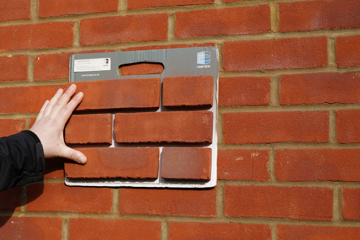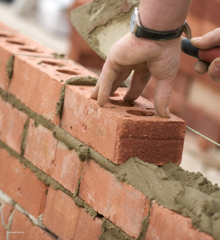A guide to slates
Slate has been a popular roofing material since the Victorian era, offering a durable, natural finish and low maintenance with an impressive life span.
In this guide, we’ll discuss the different types of slate, things to consider when buying slate, and tips for slating a roof.
Natural Slates
By far the most popular source of natural slate on the market is from Spain, accounting for 90% of the worldwide supply. The slate is of Tectonic origin, recognised for its high performance and aesthetic finish.
Spain produces a variety of different slates from quarries in the North of the country including:
Virgo slate
Sourced from the Virgo quarry in the Castille de Leon area of North Western Spain, Virgo has a rustic appearance which is a great match with natural stone built houses. These slates have a Blue/ Black coloured finish and can be well paired with copper, aluminium or bronze nails.
Leon slate
Leon is one of the best quality slates found in Spain. Quarried by a family run business in the Castille de Leon area of North Western Spain, it has been supplying top the UK for over 30 years. The slate has an attractive dark, riven finish making it a great pairing with both contemporary and traditional buildings.
Domiz slate
Quarried and split by hand in the Cabrera mountains of North Western Spain, Cabrera is known for its rich blue-grey colour and bold texture. It is strikingly similar to slate from the now defunct Welsh quarry at Ffestiniog making it a popular option in the replacement market.
There are also a large amount of indigenous slates available from the UK. These can be more expensive but are less prone to defects making them suitable for the harsher climate. Some of these include:
Welsh slate
Once shipped all around the world for use as roof tiles, Welsh slate is known for its beauty and quality. This type of slate comes in a range of colours and varieties, including:
- Welsh heather blue slate
- Welsh plum slate
- Welsh dark blue-grey slate
Cumbrian slate
Cumbrian slate has been quarried for hundreds of years with the colour often dependent on the region it’s mined from. The two most common types of Cumbrian slate are:
- Westmorland Green slate
- Burlington Blue slate
Cornish Delabole slate
Quarried in Cornwall, Delabole slate is known around the world for its extreme durability and service life. This slate is dark grey in colour.
Things to consider when buying slate
Colour
The colour of slate can range from green and purple to black and grey. Blue-grey and heather-purple slates are the most popular as they match traditional Welsh slates, which is known as the best quality slate in the world. However, as a slate in this colour is only available from a handful of quarries in Wales, Spain, and Canada, supply is low, making the price high.
Brittleness
Brittle slates are weaker and more likely to shatter. However, they do need to be brittle enough to be cut in order to provide a good fit around gable ends, chimneys, and dormer windows.
Sound
Good quality slates will produce a clear ring if you tap them, whereas poor quality slates sound like a dull thud.
Inclusions
All types of slate include non-carbonate inclusions, which are usually silver or gold and can vary from the size of a grain of sand to a small pea.
T2 and T3 inclusions are reactive to water, meaning they will rust or discolour when exposed to water. T3 inclusions may actually rust away completely, resulting in leaks and cracks. T1 inclusions, on the other hand, are non-reactive to water, meaning they won’t react in this way.
Regardless of their grading, you’ll also need to check whether any of the slate’s inclusions prevent it from lying flat.
Grain
The best quality, strongest slates have a vertical grain running straight from the top to the bottom. If the grain twists, swirls, or sits horizontally, the slate may not be as strong or durable.
Size
If you’re buying slate for your roof, size is an important factor to consider. The larger the piece of slate, the more expensive it becomes. On the other hand, while a smaller slate is cheaper, it takes more time and materials to install.
Quality
Slate is a durable, hardwearing, and watertight product that has been used to clad our roofs since Roman times.
In 2004, the introduction of BS EN 123261 brought with it the guarantee that the newly quarried slate is both frost and fireproof. This certification tests the slate’s water absorption, carbonate content, and thermal cycle resistance. There are three levels of pass for each type of the test – slates that are certified to A1-S1-T1 have the highest pass level across all three tests.
When choosing a slate, it’s important to ensure it has been tested to BS EN123261 standards, particularly if you’re buying an imported slate.
Guarantees
If you discover an issue with your slates, traceability can be an issue. Reputable natural slate providers offer guarantees and valid warranties, so sticking with these providers will help ensure you are covered if anything does go wrong.
Manmade alternatives to slate
Manmade slates have benefitted from technological advancements to manufacturing over recent years making them a viable and more cost effective alternative to natural slate tiles. Some of the man made alternatives on offer include:
Fibre cement slates
These composite slates are known for their high strength durability. They come in different colours and finishes to match natural slates available. They are also 100% recyclable and are rated A+ in the BRE Green Guide.
Concrete slates
Concrete slates are popular as they can be poured into moulds prior to curing, giving a more uniform appearance and wider variety of shapes available. They provide good resistance to weather damage, however do not have the longevity of natural slate.
How to slate a roof
Here’s an overview of how to slate a roof. We’d always recommend consulting a professional to ensure the process is safe, effective, and produces the best possible results.
Are your slates pre-holed?
Slating a roof traditionally uses hooks. However, pre-drilled slates offer a faster, simpler solution. So the first step in slating a roof is to find out if the slates are pre-holed. If not, pierce two holes in either side of the slate.
What is the pitch of your roof?
Next, you’ll need to check the pitch of the roof as this will determine how much overlap you’ll need with each slate. There are plenty of online guides or apps available that will work out the pitch of your roof for you.
How much overlap is required?
Once you know the pitch, check your slate manufacturer’s specifications to see how much overlap is recommended. It’s important you follow these guidelines as they will ensure that the finished roof is stable and secure.
Roof membrane
Now it’s time to lay the roof membrane. Ensure that the rafters and trusses are free from splinters and old nails, then roll the roofing membrane out, starting from one of the bottom corners and working towards the other corner. Repeat the process until you reach the top of the roof.
Once you’ve rolled out all the membrane, use clout nails to secure the edges and fix it into position.
Battens
The next step is to work out the placement of the battens and secure them in place. Remember to keep the required overlap in mind.
Lay the slates
Finally, it’s time to lay the slates. Start by laying the slates under the eaves and create a staggered pattern to optimise stability. Make sure you leave a 5mm gap between each slate for natural expansion.
Get in touch to find out more
To find out more about the slates we offer, or to discuss your needs, please get in touch with our team of experts.



